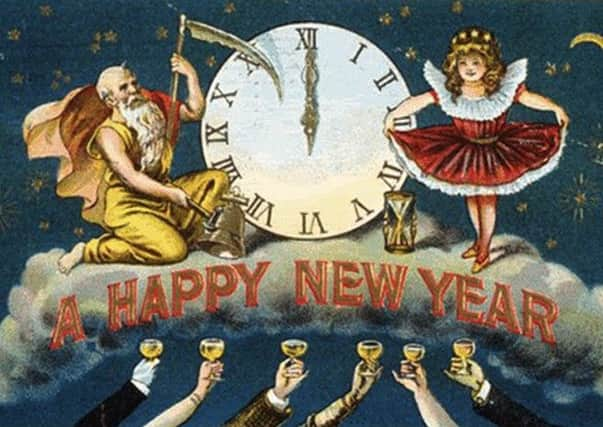Turning Year: Bring in the new with a First-footer


The best aid to predicting the future was a book. Often it was a volume of poetry, but it could be the Bible, in spite of religious scruples about telling fortunes. The method, known as dipping, was to open the book at random and run a forefinger down the page without looking. The selected verse was then examined for its meaning.
Another popular method was a bit like reading tealeaves – hot candle wax, when dripped into cold water, formed bizarre shapes ripe for interpretation.
Advertisement
Hide AdAdvertisement
Hide AdFortune telling was all very well, but most people weren’t content to leave things to chance. If the year was to be a good one, it had to start off in the right way. Somehow, luck must be made to come into the house, not flow out of it.
The solution was to take nothing out on January 1 until something was first brought in: “Take out, take in, bad luck is sure to begin. Take in and take out, good luck will come about.”
The only way to be sure was to arrange a First-footing. This used to be common in northern England as well as Scotland, and it remains our best-known New Year custom.
The basic ritual goes like this. The First-footer must be the first to cross the threshold after midnight. He must be dark-haired, and should carry items symbolic of plenty: a piece of coal for warmth, salt for food, and a coin for prosperity. The First-footer is admitted in silence, and nobody speaks until he has placed the coal in the grate. Then he’s rewarded with a drink and a bite to eat.
Advertisement
Hide AdAdvertisement
Hide AdThere were many regional variations. Often the First-footer had to perform some lucky task such as raking the fire, cutting a cake or making a short speech. Although the candidate was usually a man, women did the First-footing in parts of Scotland and the Borders. Earlier reports didn’t specify hair colour either, but in parts of the West Riding, fair or red-haired men were lucky.
Ensuring good luck didn’t stop there. In the days when everyone had a real fire and matches were yet to become commonplace, it was usual to beg a live coal from a neighbour if your fire went out. But on New Year’s Day, nobody would lend fire before noon. Washing clothes on January 1 was out of the question too, because a member of the household might be “washed away” during the coming year.
First-footers are rare today, but many of us stay up until midnight to see in and toast the New Year. Others have a taste for the dramatic. At Allendale in Northumberland guisers carry blazing tar barrels through the streets, while at Stonehaven in Grampian they whirl fireballs on the end of wire cables.
Here’s something a little less dangerous. Let out the Old Year by opening the back door at midnight, and then open the front door to welcome in the New. Start the year by wearing something new – socks will do – and make sure there’s a coin in your pocket, even if it’s only 5p.